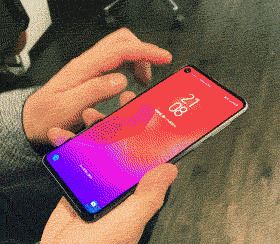How Galaxy S10 Uses The iPhone Secret Sauce In 2019
In the year 2019, Samsung is really ready to learn the lessons imparted by Apple over the past decade. In the Samsung Galaxy S10, the smartphone game changes. With the Samsung Galaxy S10, Samsung's finally releasing software that makes their hardware unique, and hardware that compliments the software they've made specifically for said hardware.
The Samsung Galaxy S10 is the first Samsung phone whose software directly reflects its hardware. I mean really. If you take any previous software build from a Samsung Galaxy S smartphone, dismissing the obvious issues with firmware and porting and all that junk, you could use said software on a different phone. I mean you could use said software on a different phone and it wouldn't look largely out of place.
This is because Samsung's been using Android like basically every other hardware company uses Android. They use the same grid of icons, they use the same settings, the same pathways to cameras – almost everything could appear on one phone as easily as another. But in the year 2019, that changes.
The dawn of the NOTCH was the first sign that we'd finally be getting Android devices that were unique from one another. Sure, the hardware's been different, the skins on the software have been different. But again, in the end, each smartphone's been a rectangular display on which Android delivers a consistent experience. The hardware may be different, but it's always meant to stand out of the way of the apps, etcetera.
In the year 2019, Samsung begins to wrap itself around the hardware. In Android, with Samsung's newest modifications to Android, they've begun to make each smartphone feel unique and special. As Apple's done with every iPhone and iPad since launch, Samsung now begins to make the software feel like an extension of the hardware.
Software Reflects Hardware
We caught glimpses of this business in some phones over the past few years. A Google Pixel launches a special options box from right near its power button when the power button is pressed. Back about a half decade ago, Android devices of several sorts had a sort of old school tube TV screen-off experience going on.
Now, not so much. Jony Ive decided that the last several generations of iOS would move away from the faux-real look of earlier generations of iOS. Android is all about Material Design and doesn't so much focus on how the software reflects the uniqueness of the hardware.
But in one single element, Samsung shows that they're moving toward making their hardware feel unique and special. With the way the software emphasizes and utilizes the front-facing camera(s) on the Galaxy S10, Samsung makes the entire Galaxy S10 family feel like a set of phones worth paying attention to.

ABOVE: Early (non-Galaxy S10) Samsung phone demo of the feature we're talking about.
The feature is simple. All Samsung seems to be doing here is flashing a little ring around the outside of the camera lens when it's activated. The lens is embedded in and behind the display in a hole in said display, so the software treats this space in a unique way.
Instead of trying to hide the hole, Samsung makes it a feature. The touchscreen works across the hole, even where there's no display, and there's a shiny ring that appears when the front-facing camera is activated. Suddenly the phone is like no other phone, and you feel like you've got a device that's line no other.
Reveal and Release Dates
It's expected that Samsung will hold an event on the 20th of February. At this event, Samsung will likely reveal the Samsung Galaxy S10 Lite, Galaxy S10, and Galaxy S10 Plus. These devices will likely go on pre-order this same day, and the release date for all three Galaxy S10 devices will likely be somewhere around March 8th. Stick around as we seek the full story!
